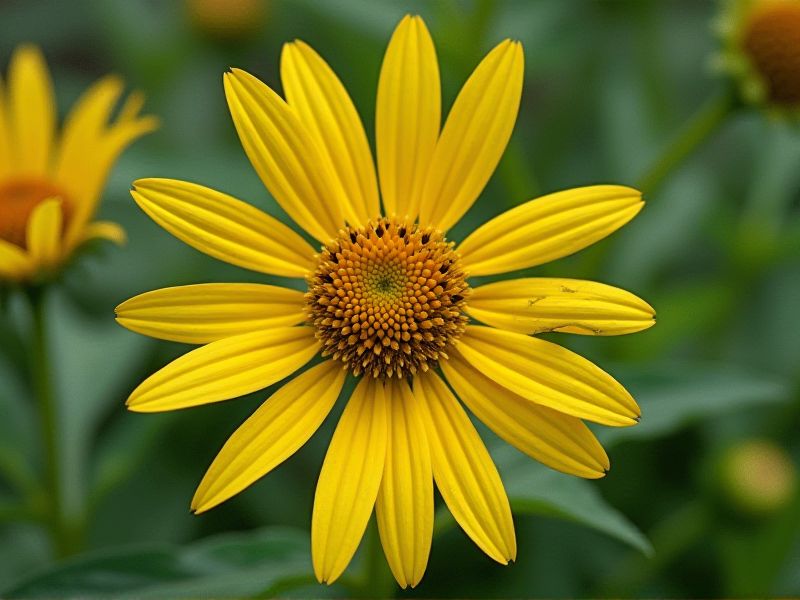
Hardy perennial plants, such as sedum, hosta, and daylilies, thrive in diverse climates and require minimal maintenance, making them ideal for low-maintenance gardens. Sedum, often referred to as stonecrop, boasts succulent leaves and vibrant flowers that attract pollinators while tolerating drought conditions. Hosta, known for its lush foliage, comes in various sizes and colors, enhancing shade gardens without demanding extensive care. Daylilies, celebrated for their stunning blooms, multiply easily and can flourish in full sun to partial shade, providing color throughout the growing season. By incorporating these resilient plants into your garden, you can enjoy a beautiful landscape with less effort and time investment.
List of some Hardy perennial plants that require little upkeep
- Lavender (Lavandula)
- Coneflower (Echinacea)
- Russian Sage (Perovskia atriplicifolia)
- Daylily (Hemerocallis)
- Black-eyed Susan (Rudbeckia hirta)
- Catmint (Nepeta)
- Sedum (Sedum spectabile)
- Yarrow (Achillea millefolium)
- Ornamental Grass (Miscanthus sinensis)
- Hellebore (Helleborus orientalis)
Important things about Hardy perennial plants that require little upkeep
Drought Tolerance
Hardy perennial plants, such as sedums, lavender, and ornamental grasses, exhibit exceptional drought tolerance, making them ideal for low-maintenance gardens. These resilient species can thrive with minimal water once established, allowing you to conserve resources while enjoying vibrant landscapes. Incorporating these drought-resistant plants not only enhances the aesthetic of your outdoor space but also promotes biodiversity by providing habitats for pollinators. By selecting hardy perennials, you create a sustainable garden that requires little upkeep, saving you time and effort while contributing to environmental conservation.
Pest Resistance
Hardy perennial plants such as echinacea, coreopsis, and sedum are renowned for their pest resistance and low maintenance requirements. These resilient species thrive in various soil types and climates, making them ideal choices for gardeners looking to reduce labor while enhancing biodiversity. By attracting beneficial insects like ladybugs and lacewings, your garden can maintain a healthy ecosystem that minimizes pest-related issues naturally. Emphasizing the selection of pest-resistant perennials not only saves time but also supports sustainable gardening practices.
Winter Hardiness
Hardy perennial plants, such as Helleborus, Sedum, and Echinacea, thrive in colder climates, showcasing resilience to winter conditions. These plants typically require minimal maintenance, making them ideal for gardeners seeking low-upkeep options. With their ability to survive frost and snow, they can emerge beautifully in spring, providing vibrant blooms and greenery. Investing in these hardy plants not only enhances your garden's aesthetic appeal but also contributes to its sustainability by reducing the need for replanting each season.
Low Fertilization Needs
Hardy perennial plants, such as lavender, sedums, and daylilies, thrive in various environments with minimal fertilization. These plants are naturally adapted to poor soil conditions, requiring only occasional amendments to ensure healthy growth and blooms. By selecting these low-maintenance species, you can enjoy vibrant gardens without the stress of frequent feeding schedules. Incorporating such hardy perennials not only reduces your overall gardening workload but also contributes to a sustainable ecosystem by minimizing nutrient runoff.
Soil Adaptability
Hardy perennial plants exhibit remarkable soil adaptability, thriving in various soil types while requiring minimal maintenance. These resilient species can flourish in sandy, loamy, or clay soils, making them ideal for diverse garden landscapes. Selecting plants such as Sedum or Echinacea not only enhances your garden's aesthetics but also supports local ecosystems by providing habitats for beneficial insects. By incorporating these low-upkeep perennials, you can enjoy a vibrant, sustainable garden that persists year after year.
Minimal Pruning Requirements
Hardy perennial plants, such as lavender and daylilies, thrive with minimal pruning, making them ideal for low-maintenance gardens. These plants typically only require occasional deadheading to promote healthy growth and flowering, ensuring your garden remains vibrant. Incorporating hardy perennials can significantly reduce your gardening workload while still adding beauty and structure to your landscape. Embrace these resilient species to enjoy a flourishing garden with less effort and maintenance throughout the seasons.
Long Blooming Periods
Hardy perennial plants, such as coneflowers, black-eyed Susans, and daylilies, offer long blooming periods, making them ideal for low-maintenance gardens. These resilient species thrive in various climates and soil types while requiring minimal watering and fertilization. With their ability to return year after year, they provide lasting beauty and attract beneficial pollinators like bees and butterflies. By incorporating these hardy perennials into your landscape, you can enjoy vibrant colors throughout the growing season with minimal effort.
Attract Beneficial Insects
Hardy perennial plants like Echinacea, Rudbeckia, and Aster not only thrive with minimal care but also serve as magnets for beneficial insects such as bees, butterflies, and ladybugs. These plants often boast vibrant flowers that provide essential nectar and pollen, supporting pollinator health and biodiversity in your garden. By incorporating a variety of these perennials, you can create a sustainable ecosystem that naturally controls pests and encourages the presence of helpful insects. Selecting native species is particularly effective, as they are better adapted to local climates and more attractive to indigenous pollinators.
Disease Resistance
Hardy perennial plants are renowned for their disease resistance, making them ideal for low-maintenance gardens. Varieties such as Echinacea, Rudbeckia, and Sedum thrive in various climates while combating common pathogens like powdery mildew and rust. These plants require minimal care, often flourishing in poor soil conditions and with limited watering, allowing you to enjoy vibrant blooms without extensive effort. Incorporating these resilient species into your landscape not only enhances its beauty but also promotes a healthier ecosystem, reducing the need for chemical treatments.
Self-Seeding Capability
Hardy perennial plants with self-seeding capabilities offer a low-maintenance gardening solution, thriving in various climates and soil types. By producing abundant seeds that naturally disperse, these plants ensure their resurgence each growing season, reducing the need for replanting. Popular choices include forget-me-nots and columbines, which not only beautify gardens but also attract pollinators, enhancing biodiversity. You can enjoy vibrant blooms year after year while conserving time and resources by opting for these resilient species.
